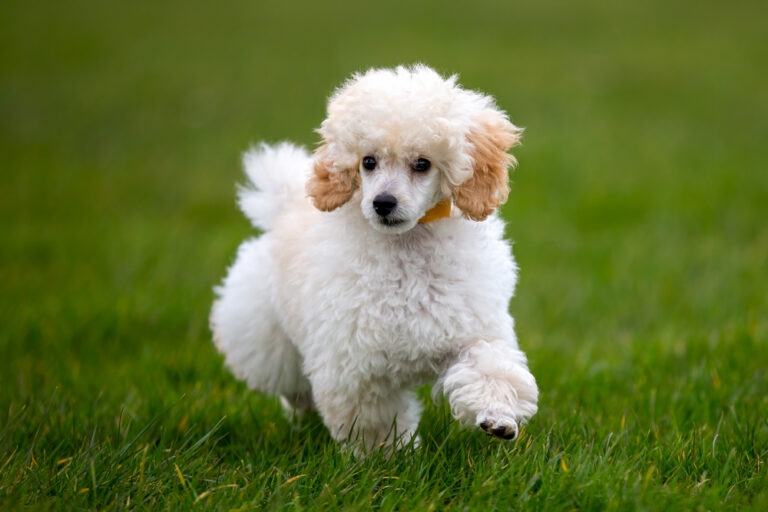- September 6, 2024
Can Poodles Swim? Vet Approved Water Guide for Your Pup – Dogster

The information is current and up-to-date in accordance with the latest veterinarian research.
When you see a Poodle today, you might think of them as dainty or even delicate dogs, as they are often considered frilly and showy. However, what might surprise you is that classically speaking, these dogs were designed for the water.
With their water-resistant coats and lean muscular physiques, Poodles can swim through the water with ease. Of course, there are safety precautions necessary for any dog in the water, but most of these pups truly are naturals by intention.

The Origins of Poodles: Classic Water Dogs
Poodles hail from Germany, even though it is a broadly misunderstood notion that these dogs come from France. In fact, Poodles were named after the German word “pudelin,” which literally translates to English as “to splash.”
When the breed developed, they were skilled masters at helping hunters with retrieval of waterfowl. As they progressed, they put down roots in France where they were employed by circuses, performing in the ring.
So, while magic card tricks and other shenanigans are quite far from where they started, it was the start of their life in show—which is how most people know them today. Don’t let them fool you though. Poodles are generally strong swimmers.

The Special Coat of the Poodle
Poodles have a dense water-resistant coat. While it might look like the Poodle was groomed to look like a million bucks, the traditional Continental clip was originally designed to help in the water. With longer hair left over the joints, on the chest and back, this clip was to help keep Poodles streamlined while swimming, but keep their joints and more vulnerable areas warm in cold water.
Many other retrievers and hunting dogs also have water-repellent coats, such as:
Is there something you might notice that most of these coats have in common? Their curly coats! There is certainly a purpose in this type of coat, apart from being visually appealing.
Do All Poodles Have the Same Strength in Water?
As you might well know, Poodles come in three size variations: standard, miniature, and toy. Obviously, this raises some questions about whether all Poodles are strong swimmers, and for a good reason!
A Toy Poodle, for example, might enjoy the water but they will tire easily and not have the capabilities of trekking into deeper waters for longer periods. So, if you’re out boating with a smaller variety, life jackets are an absolute must!
Miniature varieties might have more stamina, but they will also require attention in the water the same as a toy breed. Because of the impact certain water can have—such as moving waters like creeks and rivers, they might not have the same strength as a standard.
So, ultimately, it’s best to use your judgment and never let a dog of any size push themselves beyond their limit. It is always best to have a safety measure in place—preferably, a life jacket, but certainly a helping hand.
In shallow water, it is still best to have a secure measure in place, especially if there is any current. Just remember—protection is key.


Safety for Poodles in the Water
Even though most Poodles are skilled swimmers, you should always take precautions. For this reason, if you have your Poodle out on the water—whether it be a kayak, canoe, boat, or otherwise, putting a few measures in place will provide them with an extra layer of protection.
Life Jacket
A great example of a suitable life jacket would be the Frisco Ripstop Dog Life Jacket from Chewy. You can buy it in orange or yellowish-peach so you can spot them in even low-light settings. It comes in a range of sizes, so it will work for any variation of the Poodle.
Never Leave Your Pup Unattended
You should never leave your dog unattended in the water. Letting them get too far away from you means that you can’t help them in the event of a dangerous situation. If you don’t watch your dog appropriately, it can lead to all kinds of tragedy.
Take Breaks
Your pup might not know their limitations. For this reason, it is important to take frequent breaks from the water. They might want to go hard all day, but it’s best to temper the situation and let their muscles and minds relax.

 v
v
Dangers of Water for Dogs
Even strong swimmers like Poodles can run into trouble on the water. It is important to be aware of any risks involved so you can keep your pup protected. Most dogs are at least moderate swimmers, so many love to splash around in the cool of the pool.
Pools
Pools can be a fun place for your pup to splash—but take warning. Some chemicals can be very irritating to dogs or even dry out their skin. So, if your dog is particularly sensitive, you may have to limit pool time to keep their skin soft and supple.
Rivers
Life jackets are a must for any dog in a river. Rivers can be fun to swim in, but they can be very turbulent and often tumultuous. Some parts will be nice and steady but it can pose real hazards for dogs swimming who get swept up in a current.

Ponds/Lakes
Ponds and lakes are a fun place to play for any dog—but it can be a little treacherous in some bodies of water. Often, folks use life jackets and boat attachments to make exit and entry easy for their pup.
Creeks
While creeks can be very safe—even arguably the safest on the list, some can be quite deep in certain spots. Also, there are often branches, dead trees, sharp rocks, and other debris in the water that can hurt your pup or cause them to get stuck.

Oceans
Riptides, undertows, dangerous sea critters—take caution. Even strong swimmers don’t often fare well in the ocean. Also, dog friendly beaches can be hard to find—so make sure you do your research.

Health Hazards in Water Sources
No one really stops to think about the hazards that could be lingering in water. There are tons of different things that can impact your dog’s health, and it’s important to talk about it.
Algae
Algae blooms in the water at certain times a year. Not all types of algae are harmful but blue-green algae (cyanobacteria) is very toxic to dogs if they drink or even swim in the water. Only let your dog swim in clear water without noticeable discoloration, surface foam or algal mats.
Parasites
Parasites like Giardia, coccidia, and cryptosporidium are commonly found and water sources. If your dog swallows the water, it can lead to sickness.
Bacteria
Particularly standing water, like small lakes and ponds ,can be a source of harmful bacteria for your pup. Leptospirosis, which is spread through the urine of infected animals, is an example of a bacterial infection that can be found in fresh water sources.
Chemicals
Certain chemicals used to clean pools and other public spaces can prove to be problematic for pups. While most of them are generally safe, in excess, they can cause issues.

Do All Poodle Hybrids Share Swimming as a Strong Suit?
No. Not all Poodle hybrids will be great in the water just because they share Poodle genetics. When you have mixed breeds of any kind, you are taking a gamble on the result of each puppy in the litter based on the genetic traits it takes from each parent.
So, if you have a Goldendoodle, for example, they will likely be excellent swimmers by nature because both parent breeds are stellar swimmers. However, if you have a Sheepadoodle or Maltipoo—the situation isn’t quite the same because a Sheepdog or Maltese doesn’t have the same affinity for water.
Sure, you might get a water-loving pup who loves splashing in puddles, but you might also have a dog who is afraid of the water and prefers a warm lap instead.

Conclusion
So, there you have it. Now you know the ins and outs of the Poodle and their place in the water. If you want a strong swimmer, you certainly have found a breed that fits the bill—but remember, toy and miniature Poodles still need close supervision and a lot of help in the tides.
Featured Image Credit: Richard A. McGuirk, Shutterstock
Tags
What do you think?
Related Articles

New Puppy Checklist: Gear You’ll Need for Your New Dog
Getting a new puppy is really exciting, but before you welcome them home, it’s important to prepare your space for them. Since puppies need a

How Big Do Mini Poodles Get? Vet Reviewed Average Weight & Growth Chart – Dogster
The information is current and up-to-date in accordance with the latest veterinarian research. Learn more » When you buy a Miniature Poodle, you might not

Can Police Dogs Smell Nicotine? Vet Verified Facts & Info – Dogster
The information is current and up-to-date in accordance with the latest veterinarian research. Learn more » While cigarette sales have been declining steadily for decades,

How Old Is 5 in Dog Years? Vet-Approved Guide to Each Size of Dog – Dogster
The information is current and up-to-date in accordance with the latest veterinarian research. Learn more » A common method for calculating a dog’s age is

